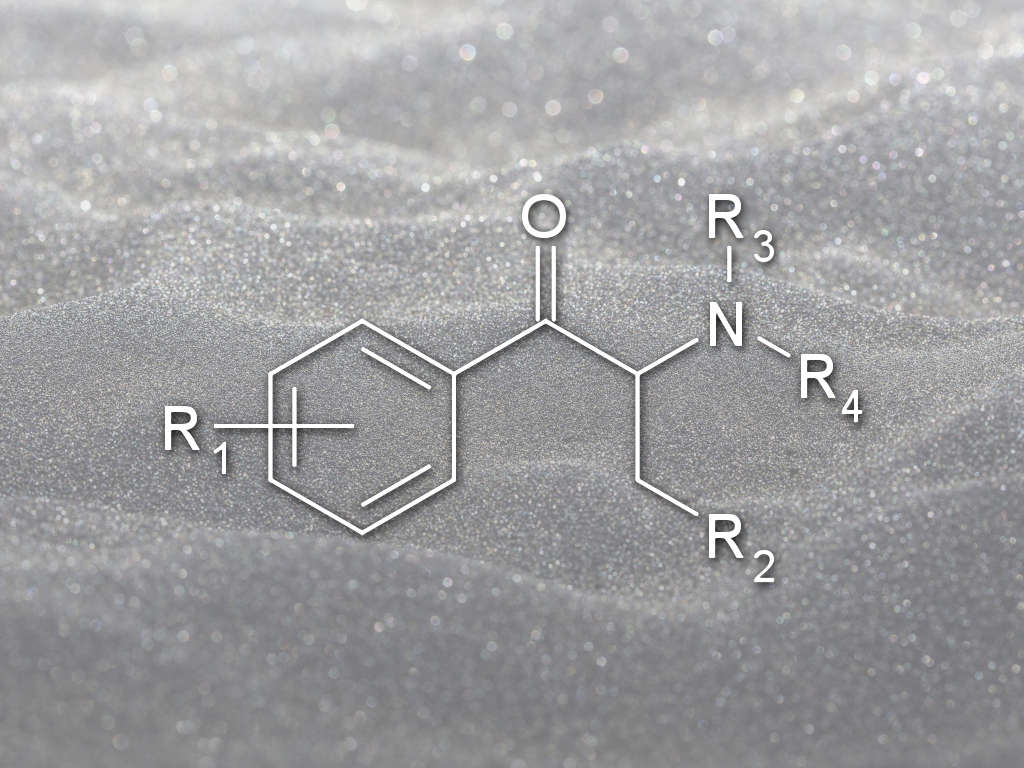What are Bath Salts?
Bath salts are a synthetic cathinone, a man-made substance stimulant related to cathinone that is derived from the khat plant. Usually found in southern Arabia or East Africa, the khat plant’s leaves were typically chewed on in order to obtain the mild stimulant effects. There are very dangerous versions of the human-made substance because they are much stronger than the natural product.
From Drugabuse.gov, “Synthetic cathinones usually take the form of a white or brown crystal-like powder and are sold in small plastic or foil packages labeled “not for human consumption.” They can be labeled as “bath salts,” “plant food,” “jewelry cleaner,” or “phone screen cleaner.”
Part of a group of drugs described as “new psychoactive substances” (NPS), synthetic cathinones are unregulated mind-altering substances with no legitimate clinical use and are made to produce the same effects of controlled substances.
Types of Bath Salts
When you think of bath salts, you probably will assume it’s referring to salts that you put in your bath to make it more comfortable and calming. Bath salt drugs refers to a substance that is a crystal-like powder and is commonly misused due to the “high” feeling it causes.
Most common forms of “bath salts” are:
- Alpha-pyrrolidinopentiophenone (alpha-PVP)
- Methylenedioxypyrovalerone (MDPV or MDPK)
- Mephedrone
- Methylone
Street Names for Bath Salts
Bath salts are sold under different brand names and are often described in “slang” terms. Some of the other names include: Cloud Nine Bliss, Blue Silk, , Drone, Wave, Energy-1, Ivory, Lunar Wave, Meow Meow, Pure Ivory, Ocean Burst, , Red Dove, Purple Wave, Stardust Snow Leopard, Vanilla Sky, White Dove, White Knight and White Lightning.
Effects of Bath Salts
Using bath salts regularly can have serious health consequences and be life-threatening. When used, bath salts work to excite the central nervous system, which in turn can affect heart function and a person’s blood pressure.
Teens who use bath salts frequently have a higher chance of damaging health consequences because their brains are still developing. In a 2017 survey, they found that 8^th^-12^th^ grade students had reported using synthetic cathinones at one point in the last year.
According to the American Association of Poison Control Centers, these drugs are most popular among people between ages 20 and 29. People younger than six and older than 59 have been exposed to bath salts.
Side Effects of Using Bath Salts
- Agitation
- Increased pulse
- Paranoia
- Hallucinations
- Chest pain
- Suicidal thinking/behavior
- High blood pressure
- Dizziness
- Sweating
- Vomiting
- Intoxication
Addiction to Bath Salts

Bath salts refers to more than just one specific drug, but several substances that are similar to one another and are synthetic cathinones derived from the khat plant. Bath salts became popular among young teens and people that liked to go “clubbing” around 2010.
“In 2012, calls about bath salts to poison control centers peaked with 2,697 and declined each year after that.”
The recent decrease in bath salt use has been due to teens using the drugs and then performing psychotic episodes while using such as eating human faces and suffering from other negative consequences or experiences. From addictioncenter.com, “It may also be due to Operation Log Jam, which was initiated by the government in 2012. In total, 109 cities were raided, 91 people were arrested, and 167,000 bags of bath salts were seized.”
Because bath salts have similar properties as other stimulants such as cocaine and meth, they are extremely addictive. More than forty states currently have banned the use of these addictive cathinones.
Bath salts have been known to be sold in places like gas stations or smoke shops and are referred to in other names such as “jewelry cleaner”, “plant food” and “phone screen cleaner.”
Symptoms of Addiction to Bath Salts
There are many signs and symptoms that are displayed if someone is misusing bath salts. Some of these signs include:
- Discontinuing activities that were once enjoyed
- Intense or extreme cravings for the drug despite the negative consequences associated
- You use the drug more often or take more than intended
- Unable to cut back or stop using the substance
- You develop a tolerance to the drug and need more to obtain the same feeling
- Experience withdrawal symptoms upon trying to stop
- Lack of fulfilling work, social, or school responsibilities
- Continue using even when other mental health disorders are present either because of the drug use or are worsened from drug use
Long-term misuse of bath salts can result in some negative health consequences such as:
- Dizziness
- Psychosis
- Malnutrition
- Heart problems
- Mood disorders
- Total loss of coordination
- Ulcers
Withdrawal from Bath Salts
Reports have shown that after discontinuing bath salt use people experience withdrawal symptoms such as:
- Depression
- Anxiety
- Abnormally low energy levels
- Cravings
- Fatigue
- Inability to feel pleasure
Some other reported side effects that were most common among users were:
- Hallucinations
- Agitation
- Rapid heart rate
Treatment for Bath Salt Addiction

There are many treatment options available for people struggling with bath salt addiction. The best treatment plan will be dependent on other factors such as frequency of use, mental health history and if they are using any other substances at the same time.
It is possible to get help in an outpatient treatment program that allows the person to remain living at home and will attend regular therapy sessions. For people struggling with other co-occurring disorders, inpatient treatment or a residential treatment program may be necessary.
Therapies for Bath Salt Addiction
Most therapy involves both individual and group therapy that addresses the underlying reasons behind why they use substances and how to overcome those.
Cognitive Behavior Therapies for Bath Salts
Psychotherapy that addresses certain unwanted behaviors by improving emotional regulation and mental health with evidence-based strategies.
Motivational Enhancement Drug Therapy
Therapy that aims to produce rapid and internally motivated change in behaviors rather than guiding the patient step by step through the treatment process.
Contingency Management for Drug Use
Therapy that uses stimulus control and consequences to cause changes in behavior, sometimes implemented from a cognitive-behavior therapy (CBT).
Behavioral interventions for teenagers or adolescents
A behavioral approach that addresses problem behaviors and help lead people to improved behavior and lifestyle.
Facebook
Twitter
LinkedIn
Reddit
Facebook
Twitter
LinkedIn
Reddit
